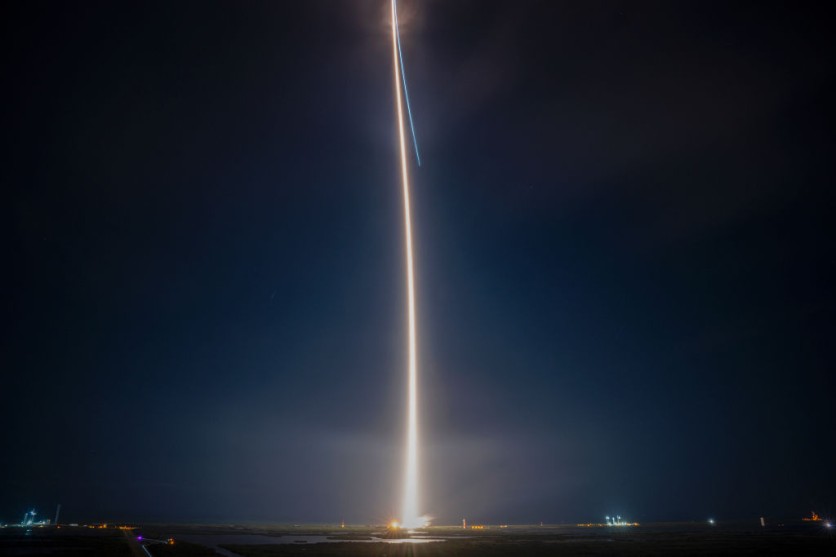Engineers at the University of Glasgow have developed a "self-eating" rocket engine, which burns parts of its body for extra fuel, that could alter the landscape of space travel.
This "autophagy" rocket engine deviates from conventional rockets by using waste heat to melt its own plastic fuselage, turning it into additional fuel and leaving no debris behind. This unconventional method also reduces the need for fuel in onboard tanks, making the rocket more efficient in mass utilization for payload.

The Ouroborous-3 Autophage Engine
Apart from efficiency gains, the team claims that the autophage rocket engine will address concerns about space debris, a problem associated with discarded waste in orbit. The reduction in space debris aligns with ongoing efforts to manage the increasing issue of orbital clutter around Earth.
The University of Glasgow engineers noted that they successfully fired the first unsupported autophage rocket engine. Despite being a nearly century-old concept first proposed and patented in 1938, controlled tests did not happen until the collaboration between the University of Glasgow and Dnipro National University in Ukraine achieved this breakthrough in 2018.
The latest developments, supported by Kingston University and presented at the AIAA SciTech Forum in Orlando, highlight the use of more energetic liquid propellants and the plastic fuselage's resilience to engine-loading forces, bringing the concept closer to viable flight.
The Ouroborous-3 autophage engine demonstrated successful tests at the MachLab facility in Machrihanish Airbase in Scotland, generating 100 newtons of thrust.
Using high-density polyethylene plastic tubing as its autophagic fuel source, burning it alongside the rocket's mix of gaseous oxygen and liquid propane, the engine exhibited stable burns, with the plastic fuselage contributing one-fifth of the propellant.
The tests also showcased the engine's controllability, allowing for throttling, restarting, and pulsing, essential for future autophage rocket ascent control.
Foundational Step
Professor Patrick Harkness from the James Watt School of Engineering at the University of Glasgow spearheaded the development of the Ourouboros-3 autophage engine.
"These results are a foundational step on the way to developing a fully-functional autophage rocket engine. Those future rockets could have a wide range of applications which would help advance the UK's ambitions to develop as a key player in the space industry," Harkness said in a statement.
"A conventional rocket's structure makes up between five and 12 percent of its total mass. Our tests show that the Ouroborous-3 can burn a very similar amount of its own structural mass as propellant. If we could make at least some of that mass available for payload instead, it would be a compelling prospect for future rocket designs," he added.
The team will continue advancing its autophagy engine development, aided by fresh funding from the UK Space Agency (UKSA) and the Sciences and Technology Facilities Council (STFC), a division of UK Research and Innovation (UKRI).
The Glasgow team's autophage engine is one of 23 space technology projects recently selected to share in £4 million from the UK Space Agency and STFC. The team received £290,000 for further pilot testing of the prototype engine.
Related Article : Astrobotic's Peregrine Moon Lander is Coming Home, to Burn Up on Earth's Atmosphere

ⓒ 2026 TECHTIMES.com All rights reserved. Do not reproduce without permission.




